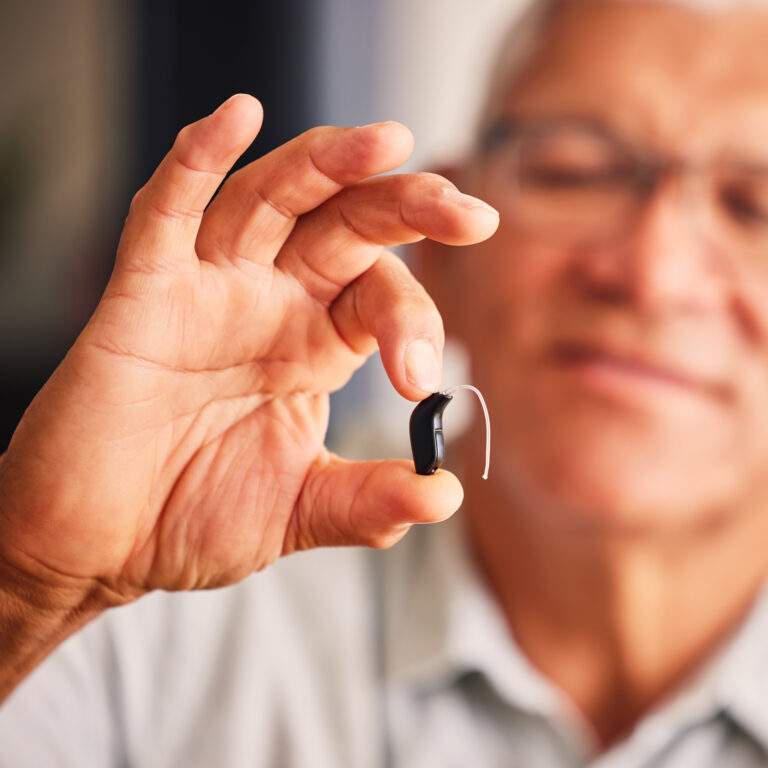Hearing aids are devices that are designed to help individuals with hearing loss. They work by amplifying and processing sound so that the person wearing them can listen more clearly. If you or someone you know is considering getting a hearing aid, it’s important to understand how it works and the available options. Here, we will discuss the basics of how hearing aids work and provide tips for choosing the right one.
Purpose of Hearing Aids
Hearing aids are critical in improving the quality of life for those with hearing loss. They operate to make sounds more audible and clear for the user, enhancing their ability to communicate effectively. By amplifying sounds, they improve your ability to hear conversations and environmental sounds, significantly improving safety and awareness.
How Do Hearing Aids Work?
The working of hearing aids can be understood by breaking it down into three basic parts: a microphone, amplifier, and speaker. The microphone captures the sound, the amplifier increases the volume, and the speaker delivers the amplified sound into the ear. However, modern hearing aids are more advanced and include additional features to improve the user’s listening experience.
Microphone
The microphone is the first component of a hearing aid that picks up sound from the environment. It can be placed outside or inside the ear canal, depending on the type of hearing aid. Some hearing aids also have directional microphones which can focus on specific sounds or voices in a noisy environment.
Amplifier
After capturing the sound, the hearing aid’s amplifier increases its volume to a comfortable and audible level. A hearing care professional can adjust the amplification process according to the individual’s needs and preferences.
Speaker
The amplified sound is then delivered through a speaker into the ear canal. The speaker is placed at the end of a plastic tube in behind-the-ear hearing aids while it is directly inserted into the ear canal in-the-ear hearing aids. In both cases, the speaker delivers sound vibrations that stimulate the inner ear and allow for better hearing.
Types of Hearing Aids
There are several types of hearing aids available on the market, each with its unique features and benefits. Besides OTC hearing aids, the most common types include behind-the-ear, in-the-ear, and receiver-in-canal hearing aids.
- Behind-the-Ear (BTE): Behind-the-ear hearing aids are the most popular type. They consist of a plastic case that rests behind the ear and is connected to an earmold or a custom-made earpiece that fits inside the ear canal.
- In-the-Ear (ITE): In-the-ear hearing aids are smaller than behind-the-ear ones and sit completely inside the outer ear. They are custom-made to fit the shape of the ear and can be more discreet.
- Canal aids: Canal aids are smaller than in-the-ear aids and offer cosmetic and listening advantages. They fit either in the canal or fully inside the ear, making them nearly invisible to others.
Do all hearing aids work the same way?
While all hearing aids have the same fundamental purpose, not all work the same way. There are two types of hearing aids: Analog and Digital.
Analog Aids
Analog aids convert sound waves into electrical signals, amplified to provide a louder output. These hearing aids are custom-built to cater to the unique needs of each user. The manufacturer programs the aid according to the specifications recommended by your audiologist.
Analog hearing aids come in two types: adjustable and programmable. Adjustable aids are custom-designed with specific settings for the user, while programmable aids offer greater flexibility.
Programmable aids have multiple settings or programs that can be adjusted to suit different listening environments. You can modify the settings accordingly, whether in a small, quiet room, a crowded restaurant, or a large open space like a theater or stadium. The versatility of analog/programmable circuitry makes it suitable for all hearing aids. Analog aids are generally less expensive than digital aids.
Digital Aids
Digital hearing aids have a different way of functioning than analog hearing aids. They first convert sound waves into numerical codes, similar to the binary code used by computers, before amplifying them. This coding process also includes information about the sound’s pitch or loudness. This allows digital aids to be programmed to amplify certain frequencies more than others, according to the user’s needs.
Digital circuitry in hearing aids provides audiologists with greater flexibility to adjust the device to meet the user’s specific needs and listening environments. These aids can be programmed to focus on sounds from a certain direction, resulting in a more personalized hearing experience. Both analog and digital circuitry can be utilized in various hearing aids.
While all hearing aids aim to improve the user’s hearing capability, they do not all work the same way. The choice between analog and digital will depend on various factors: the user’s specific hearing needs, the listening environments they encounter, accessories, and their budget.
Take the First Step Towards Better Hearing
Investing in your hearing health can transform your life. At Great Hearing Benefits, we offer three years of service and a warranty for traditional hearing aids, up to 50% off MSRP pricing. Furthermore, we are offering a 25% discount on Jabra hearing aids.
Don’t let hearing loss hold you back. Invest in hearing aids and take the first step towards a better quality of life.



